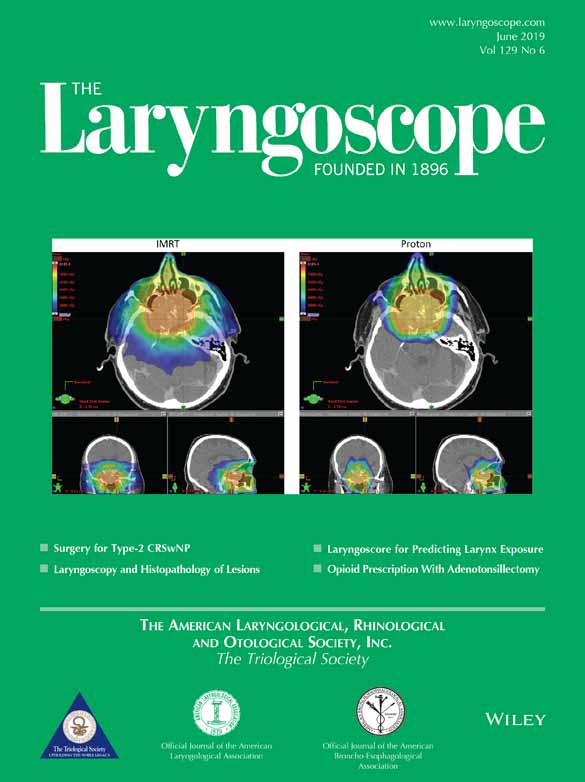Correlating laryngoscopic appearance of laryngeal lesions with histopathology
Presented at the 2018 American Broncho-Esophagological Association Meeting at the Combined Otolaryngology Spring Meetings, National Harbor, Maryland, U.S.A., April 18–22, 2018.
The author has no funding, financial relationships, or conflicts of interest to disclose.
Abstract
Objectives/Hypothesis
Meticulous scrutiny of laryngeal lesions with laryngoscopes and microscopes often identify angiogenic activity, one of the hallmarks of neoplastic and preneoplastic lesions. The aim of this study was to determine if there is an association between laryngoscopic appearance and histopathology of laryngeal lesions based on operative biopsies.
Study Design
Retrospective case-control study.
Methods
One hundred forty-four laryngeal biopsies from 92 patients between 2015 and 2017 met inclusion criteria. Cases were patients who had biopsy-proven laryngeal dysplasia or malignancy. Controls were patients who had benign laryngeal pathology. All of the laryngeal lesions had either keratosis or vascular stippling, an indication of angiogenic activity. Medical records, videostroboscopies and operative findings of these patients were reviewed. Multivariable logistic regression was used to examine the correlation between laryngoscopic appearance of laryngeal lesions and presence or absence of dysplasia and invasive carcinoma.
Results
Fifty percent of the 144 laryngeal lesions were classified either as dysplastic or malignant by histopathology. Vascular stippling was present in 31% of all laryngeal lesions. On logistic regression, vascular stippling was significantly associated with dysplastic and malignant lesions (P = .0018). Overall sensitivity and specificity of vascular stippling and the presence of dysplasia and malignancy were 51% and 89%, respectively.
Conclusions
Laryngoscopic and microscopic appearance of vascular stippling could inform clinicians on diagnostic sampling of suspicious laryngeal lesions that reduces delay in diagnosis. The low sensitivity of vascular stippling underlies the importance of maintaining high clinical suspicion and proceeding to the operating theater for adequate tissue sampling.
Level of Evidence
3
Laryngoscope, 129:1308–1312, 2019




